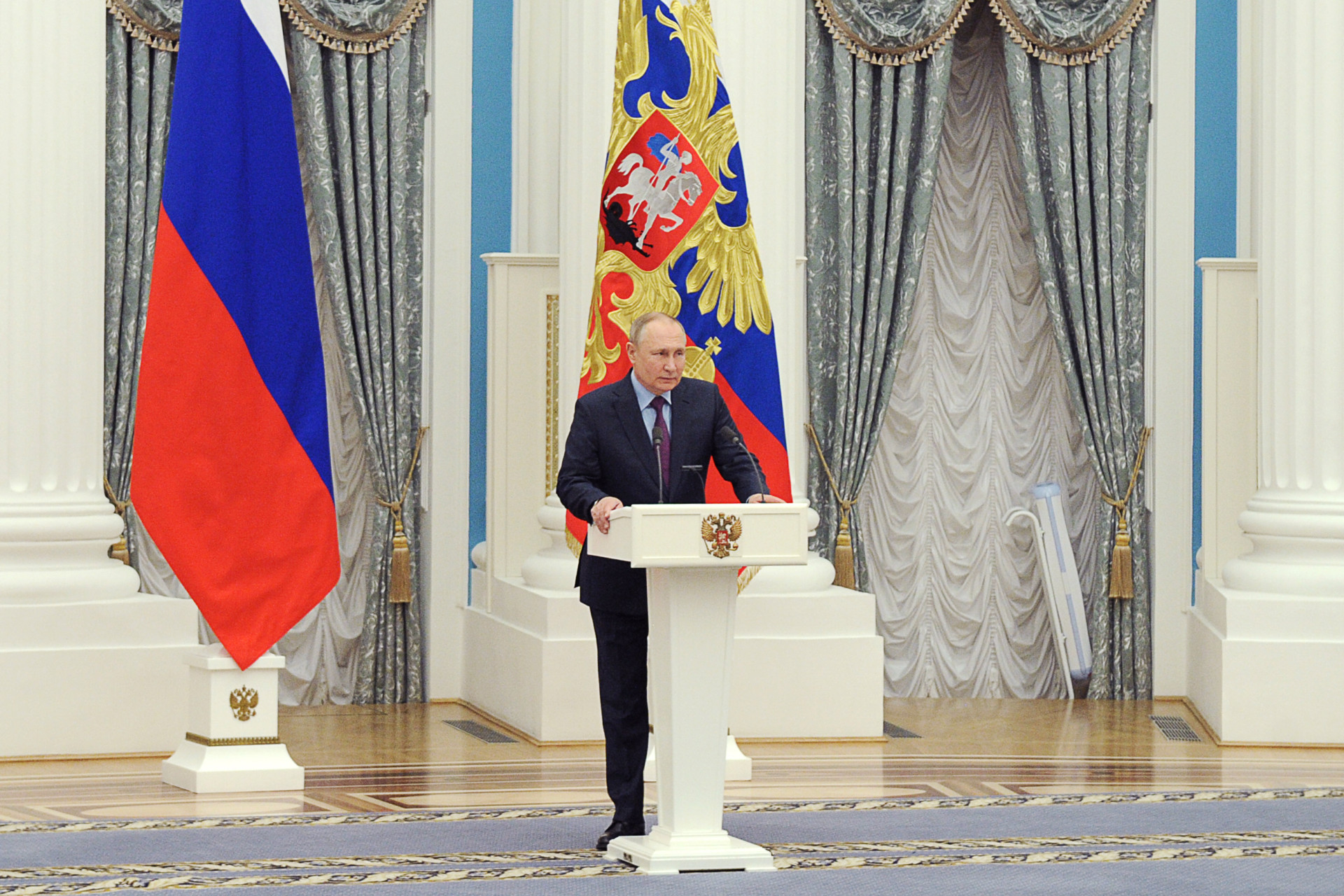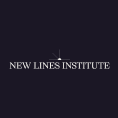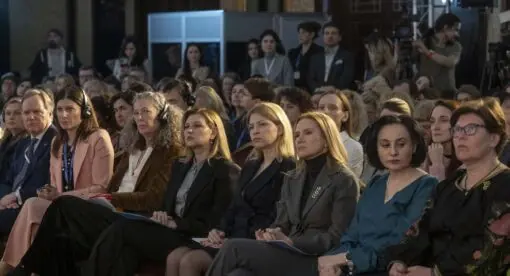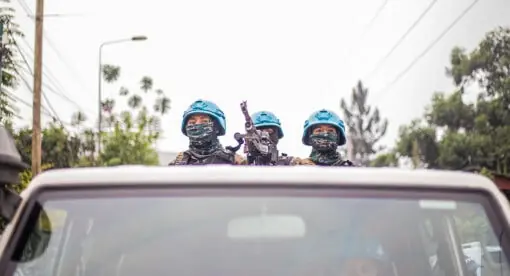As Russia prepared for its unprovoked invasion of Ukraine, President Vladimir Putin made several emotional speeches in which he drew upon historical myths to justify his country’s actions. This mythmaking – around Russia’s relations with Ukraine, the supposed threat of NATO, the national mythology of the Great Patriotic War, and the ideals of Russian exceptionalism (Samobyt’nost) – is key to understanding Russia’s aggression. Each of these myths are potent because swaths of the Russian population and elite circles believe them to various degrees.
Russia’s Historical Mythmaking
The first myth is that of Russian-Ukrainian relations. Putin’s speeches leading up to the invasion, including a Feb. 21 speech where he expressed concern about the Donbass region and his Feb. 24 announcement of what he called a “special military operation” in Ukraine, are underscored by the idea that Ukraine’s choice of West over East is a great betrayal to Russia. In each, Putin referenced the countries’ shared history, including Russian assistance to Ukraine in the 1990s, and in the Feb. 21 speech he repeatedly claimed that Bolshevik leaders “robbed” Russia of key territory – outlining deep-seated grievances around the topic of territorial integrity. A few months earlier, in July 2021, Putin authored an essay documenting Russia and Ukraine’s shared history since the conception of Kievan Rus and indicated his desire to address the “Donbass question.”
Second, there is NATO. To understand the Kremlin’s paranoid view of the alliance, we first look to George Kennan’s 1946 long telegram, which stated, “At bottom of [the] Kremlin’s neurotic view of world affairs, is the traditional and instinctive Russian sense of insecurity.” NATO therefore is easily framed as an enemy of Russia and joins a litany of hostile coalitions Russia has seen as a threat to its security.
During the Cold War, Soviet citizens were conditioned to see NATO as the vanguard of capitalist oppression, and when the Cold War ended and the Soviet Union collapsed, NATO continued to exist. NATO’s subsequent move eastward, and a rejection of Russia’s equal partnership, strengthened Russia’s discontent in the West, with many feeling that being excluded from NATO meant it was being isolated from contemporary political and security issues.
NATO involvement in the wars in the former Yugoslavia during the 1990s and the more recent conflicts in the Middle East, for example, also play a dominant role in how Russia strategically places itself against the West. Notable in Putin’s Feb. 24 speech were his references to NATO’s bombing of Belgrade without consent of the U.N. Security Council and NATO’s role in Iraq, Libya, and Syria.
Next is the unifying myth of the Great Patriotic War. Russian political leaders – especially Leonid Brezhnev, Boris Yeltsin, and Putin – have long drawn upon Russia’s history to outline and detail contemporary issues, to unite society by a legitimate historical event, and advise on political policies. For example, Putin uses the “chaos” of the “wild nineties” to gain legitimacy and create distance from the economic, political, and social hardships of Yeltsin’s Russia.
However, much of Russia’s historical mythmaking is situated in military loss and victory. Framed as both a chosen trauma and victory, the Great Patriotic War (1941-1945) has commonly underscored Russia’s memory diplomacy since Brezhnev’s reign. It was under Brezhnev’s leadership that the “myth of the Great Patriotic War” was created, with sacrifice, loyalty and generational debt forming a basis for these growing discourses.
Even at the end of the Cold War, when the Soviet Union and Communist ideology collapsed, the Great Patriotic War victory was reshaped to fit the identity of the newly formed Russian Federation, with the victory tied to the successes, actions, and heroes of Russian history in general. Key monuments of figures like General Marshal Zhukov, for example, mimicked statues of other Russian “heroes” like Dmitry Donskoy and Nikolai II. World War II has been used by all Soviet and Russian leaders since Brezhnev in their policy making, and it has remained an important part of Russia’s commemorative calendar.
What makes the mythology of the Great Patriotic war so palpable is the ease with which people across the former Soviet States can connect to its shared narrative. The war was devastating in scope and human cost, and people across the former Soviet Union have family members who either were lost in the war or were shaped by it. The Great Patriotic War’s history is not embedded in the actions taken by leaders at the time but by the Soviet people’s resolve, courage, and very right to exist.
The Soviet victory over fascism was a major aspect of Putin’s Feb. 24 speech. Putin outlined the rise of fascism in Donetsk and Luhansk, as well as NATO’s achievement of strategic goals through the alleged support of neo-Nazi organizations as major contributors to his “special military operation.” He claimed that Russia’s goal “is to protect people who have been subjected to bullying and genocide by the Kyiv regime for eight years. And for this we will strive for the demilitarization and denazification of Ukraine, as well as bringing to justice those who committed numerous, bloody crimes against civilians, including citizens of the Russian Federation.” His speech is in many ways a twisted inversion of the accomplishments of the Great Patriotic War.
Finally, Putin refers to Russia’s future within the framework of Samobyt’nost, which acknowledges Russia’s unique path, underlined by Slavic ideas, culture, values, and goals. American Russian cultural historian James Billington wrote, “Russia sees itself as the last true kingdom before heaven.” Russia’s status as true inheritor of the Roman and Byzantine legacy was a concept first used by the tsars and then transformed by the Soviets to hold up the USSR as the vanguard of the final society.
The Limits of Mythmaking
The fall of the USSR has led to a reversion to these older ideas, which previously Putin flirted with but didn’t seem to fully embrace in his speech. “Things that do not suit the hegemon [NATO], those in power, is considered archaic, obsolete, unnecessary,” he said in his Feb. 24 speech, which speaks to Russian chauvinists’ existential fear that their ideas of crude ethno-nationalism and Russia as the center of the Slavic world cannot survive the liberal ideas of Europe. Kennan observed in 1946 that “insecurity was one which afflicted rather Russian rulers than Russian people; for Russian rulers have invariably sensed that their rule was relatively archaic in form, fragile and artificial in its psychological foundation, unable to stand comparison or contact with political systems of Western countries.” Putin’s mythology then does have the ability to gain traction segments of the population but how much is unclear.
Denis Volkov, of Meduza, recently said: “After 2014 a negative attitude prevailed; there was maximum anti-Americanism. It peaked in 2014-2015, then started to drop. In late 2020, negative and positive attitudes were already [split] fifty-fifty. Now I think there will be a new deterioration.” A recent poll by the Russian Public Opinion Research Center showed that out of 1,600 respondents, 73% supported Putin’s decision to recognize the independence of Donetsk and Luhansk.
Nevertheless, we continue to see large swathes of support for Ukraine, and against Russian military action in the form of the “Net Voine” (No to War) campaign, with hundreds of thousands of people taking to the streets of capital cities around the world like London and Washington, as well as in multiple cities in Russia itself. We are also witnessing increasing numbers of Russian celebrities, and even State Duma representatives, calling for Putin to stop the invasion.
Finding solutions to Putin’s invasion of Ukraine will be difficult, since Putin is wholly convinced that his decisions are logical. He and some in his inner circle expected easy victory and that the West would rapidly accept the new reality. Neither of these things have come to pass, and now the Russian population have become the main targets of Western economic sanctions. Many believe these sanctions will invoke a popular uprising in Russia, however, in the space of a few days, many of the civil liberties and economic gains that Russia built over the last 20 years have been destroyed – for example, independent radio channel “Echo Moskvy” has been silenced and Gazprom once touted as a soon to be Trillion-dollar company has lost 95% of its value. While there have been sizable demonstrations across Russia showing peoples resolve to challenge Putin’s decisions, current opinion polls and increasing isolation from the West suggest that at least a significant segment of the population may inevitably end up worshipping at Putin’s golden calf.
Dr Allyson Edwards is a Teaching Fellow at the University of Warwick. Edwards completed her PhD in 2021, focusing on Russia militarism in the 1990s. She is an expert in memory diplomacy, patriotic education systems, and historical mythmaking. You can follow her on Twitter at @AllysonEdwards1.
Jeff Hawn is an independent geopolitical risk consultant and a tactical analysis expert. Previously, Hawn worked for four years as an OSINT analyst with the private intelligence firm, Stratfor where he specialized in domestic extremism and civil unrest. He is also a Ph.D. candidate at the London School of Economics in international history centered on the Russian constitutional crisis of 1993 and the emergence of the post-Cold War world order. He tweets at @jeff_hawn.
The views expressed in this article are those of the authors and not an official policy or position of the New Lines Institute.






